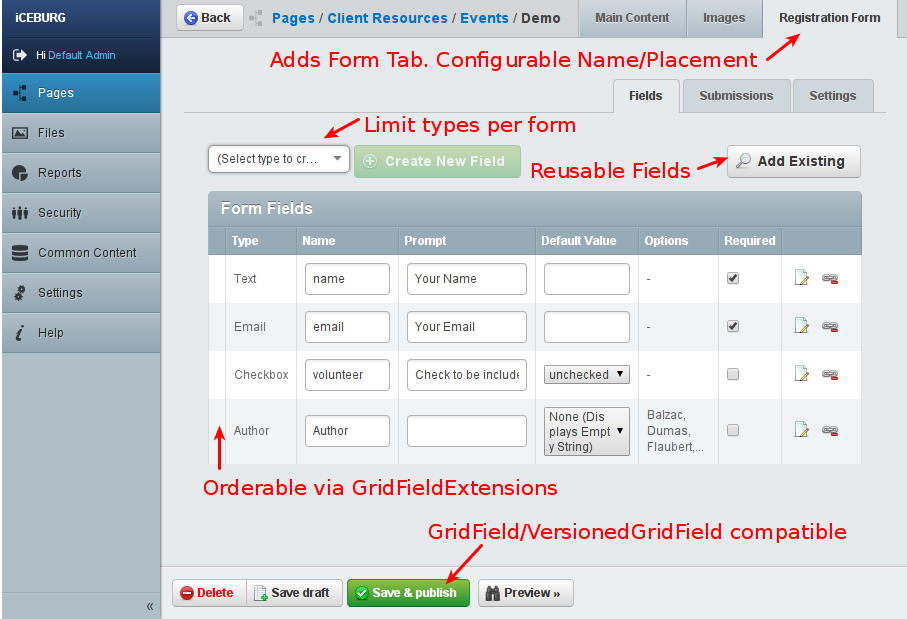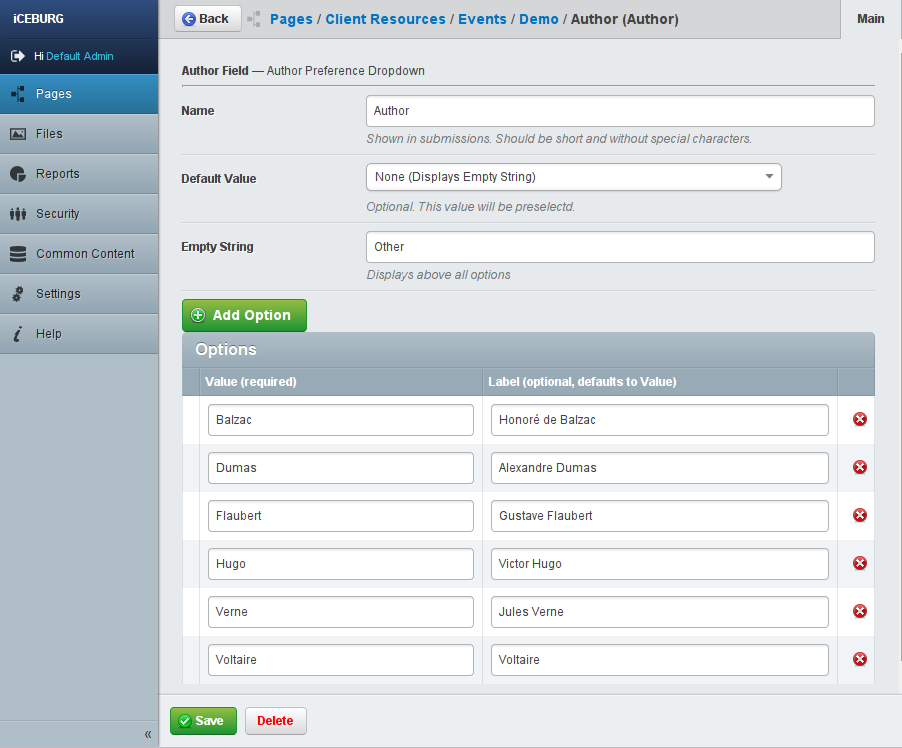Download the PHP package briceburg/silverstripe-flexiform without Composer
On this page you can find all versions of the php package briceburg/silverstripe-flexiform. It is possible to download/install these versions without Composer. Possible dependencies are resolved automatically.
Download briceburg/silverstripe-flexiform
More information about briceburg/silverstripe-flexiform
Files in briceburg/silverstripe-flexiform
Package silverstripe-flexiform
Short Description Add CMS configurable forms to your SilverStripe objects.
License BSD-3-Clause
Homepage https://github.com/briceburg/silverstripe-flexiform
Informations about the package silverstripe-flexiform
silverstripe-flexiforms
Add CMS configurable forms to your SilverStripe objects.
Features
- Add forms to any DataObject or Page
- GridField based management of fields, options, submissions, actions, &c.
- 100% compatible with holder pages & VersionedGridfield
- Programmatically define initial fields and handlers + build them from the Environment Builder
- Many-many between Form and
FlexiFormField, has_many betweenFlexiFormHandler- reduced repetitiveness and improved consistency
- extraFields allows per-form customization without disturbing other forms using the same field
- Protection against form re-submissions
- Definable, friendly post URLs for logs and analytics
- Support for multiple forms per page
Requirements
The venerable GridFieldExtensions https://github.com/ajshort/silverstripe-gridfieldextensions
Tested in SilverStripe 3.1
Screenshots


Usage
- Add flexiforms to Pages and DataObjects by extending with
FlexiFormExtension. E.g.
Trigger the environment builder (/dev/build) after extending objects -- You will now see the Form tab when editing Event in the CMS.
- To display flexiforms, add $FlexiForm to your template. Here's a sample Event.ss;
Here we use $FlexiFormPosted to hide $Content if a form has been posted.
Flexiform also provides a convenience wrapper around the standard $Form method. Calling $Form from a Page extended by FlexiFormExtension will output the associated flexiform. E.g.
Works exactly the same as the first example.
Form Identifiers
Use Form Identifiers when you have multiple forms on a page, need to reference a form (e.g from another page), or want to control the post URL.
FlexiForm extends ContentController to provide the $FlexiForm method to all
pages. By default it expects the controller's dataRecord to be an object
extended by FlexiFormExtension. You can explicitly set the flexiform
object by calling the setFlexiFormObject method on your controller, or by passing
an Identifer to $FlexiForm.
Form Identifiers are defined in the Settings tab on flexiforms. The identifier is also used in post URLs for easy tacking of form submissions in server logs and analytics.
Shortcodes
Alternately, you can use the [flexiform] shortcode in content areas. This is especially useful for controlling placement of a form inside existing content.
Optionally pass a Form Identifier through the ID paramater.
Templates, Custom Form Classes
By default, flexiform uses Form.ss to render the form. You can change the template by
-
Simple Means: Adding a FlexiForm.ss to your theme
- Powerful Means: Provide an alternate form class via $flexiform_form_class
Configuration
Most configuration is accomplished through the CMS -- however you can further tailor behavior through subclassing (protected properties, getters, and setters) and YAML Configuration.
See docs/CONFIGURATION.md for documentation and examples.


